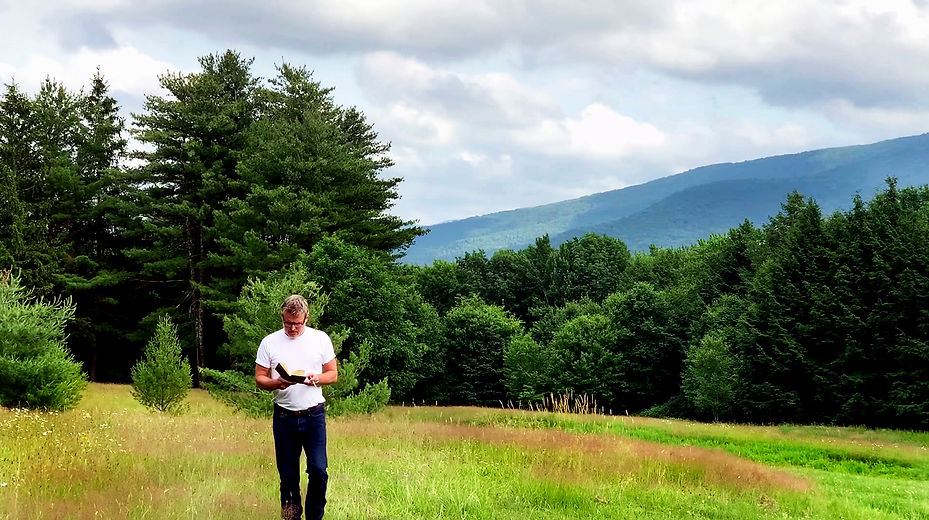STREAMING MUSEUM
Arts · Technology · World Affairs
HOW WE LIVE TOGETHER
An Exclusive Online Screening was presented October 31-November 15, 2021 at StreamingMuseum.org. Below are excerpts from each of the 4 short films by Anne Katrine Senstad, that were created during the pandemic in collaboration with acclaimed American actor Bill Sage and audio produced by JG Thirlwell. Stay tuned for future screenings!
Sage's captivating monologue performances look to ways of understanding community and individuality, isolation and space, rhythms of life and the human condition, questioning where we are going and how we want to shape our common future. Senstad invites contemporary viewers into these questions, just as Roland Barthes had in his original 1977 critical worldview lectures on which the films are based.

UTOPIE/UTOPIA (2020)
The state of tolerance is a place of utopia. Anne Katrine Senstad’s film explores the nuances of French philosopher Roland Barthes’ (1915-1980) term “idiorrhythmy”—a productive form of living together in which one is autonomous yet recognizes and respects the individual rhythms of others.
In Senstad's first film in the series of four, exploring Barthes text UTOPIE/UTOPIA from his 1977 book How To Live Together, acclaimed actor Bill Sage, in a personal and evocative monologue performance, assumes the character of Barthes in the creative process
of preparation for his University lecture series of four decades ago. Set in the context of our contemporary world that is gripped by societal and political crises amplified by the 2020 pandemic, Sage’s character explores various forms of solitude through Barthes’ contemplations on history, psychology and societal structures. Barthes’ text concludes that our “Sovereign Good” is a form of tactful cohabitation and that an inner state—the state of tolerance—is a place of utopia.
In critical view of the human condition in current world affairs, Senstad suggests that a healthy value system has been disenfranchised and replaced by what the French philosopher Jean Baudrillard (1929-2008) called a simulacra—a post-modern imitation of reality, consumerism, and predatory systems. Senstad and Sage express these theories in the films which were produced remotely, along with the acclaimed sound production work of JG Thirwell, within the confines of isolation during the pandemic.
A version of this article entitled "UTOPIE/UTOPIA" appears in the special UN 75th anniversary issue of the publication CENTERPOINT NOW, “Are we there yet?” Copyright 2020, World Council of Peoples for the United Nations.

UTOPIE/UTOPIA (2020), 10:26 min (excerpt)
Barthes theorizes that tolerant co-habitation is a place of utopia, and reflects on ways of understanding community and individuality, societal and political systems, and solitude and the degree of contact necessary for individuals to exist and create at their own pace.

MÔNOSIS/MONOSIS (2021), 11:21 min (excerpt)
Barthes contemplates the human monastic state—solitude, the isolated self, and seeks to identify the problem of separation, from community and from our internal unification as an aspect of iddiorhythmic Living-Together. Within societal structures, to be alone is construed as a punishment. However in the place of utopic unity, the individual searches for a state of peaceful tolerance as distanced cohabitation.

MARGINALITÉS/MARGINALITIES (2020), 11:27 min (excerpt)
Those who live on the margins or reacting to violence and oppression created by power, are the source of intense social anxiety and considered dangerous, until they can be controlled and conform to society’s norms. The margins however are also a place of power, one is untouchable which is a form of a holy state. The isolated state on the margins is the creative space in which Barthes examines liberation.

XÉNITEIA/XENITEIA (2021), 17:39 min (excerpt)
Senstad's fourth film in the series reflects on notions of exile and the displacement of peoples, politically, psychologically and due to climate change—the idea of being an outcast from ones home and not belonging to a community—to be ‘in the world but not of the world’. We are ultimately alone, exiled within the world and from ourselves, as Barthes interweaves states of inner displacement and nostalgia – ultimately sentiments of isolation.
Anne Katrine Senstad is a New York based Norwegian artist. Her international practice lies in the intersections of installation art, photography and video, immersive installation art, and site specificity, with a focus on the phenomena of perception and ethics. Her social-political projects engage in gender politics, community and critical philosophy through text and film. Senstad's spatial light sculpture and installation art is featured in the Emmy award winning series Immersive World alongside James Turrell, Dan Flavin, Dia Art Foundation and Anthony McCall, available on PBS in the US and Terranoa.com in Europe. annesenstad.com
Bill Sage is an American actor who has appeared in over 120 films, TV and stage productions. Throughout his career, Sage has been a champion for diversity and equality in the film industry. He has made a point of working with female Directors, Writers and Producers. Select film and TV performances include American Psycho, The Insider, Boardwalk Empire, Hap & Leonard.
JG Thirlwell is a sound producer and composer based in Brooklyn, NY. The state of the art sound for “How We Live Together” has been mastered by Thirlwell for an enhanced and dimensional experience of the actors performance. He has released over thirty albums and creates the musical score for the Emmy-winning FX show Archer, and Adult Swim / Cartoon Network show The Venture Bros. foetus.org.